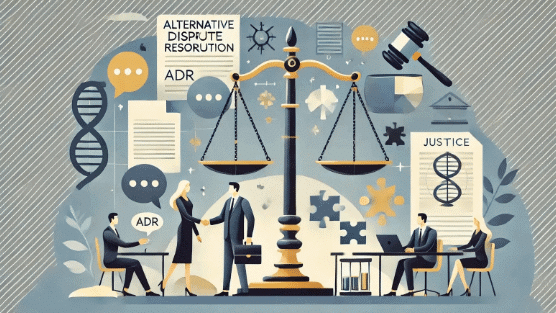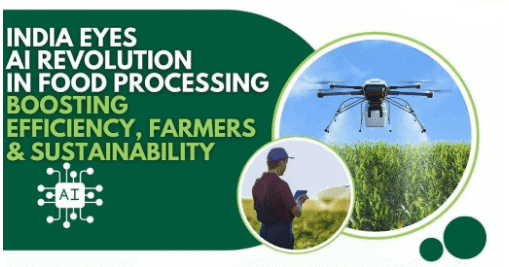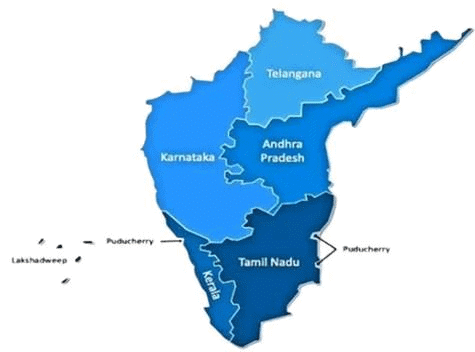Weekly Current Affairs (22nd to 28th February 2025) - 2 | General Test Preparation for CUET UG - CUET Commerce PDF Download
Mediation as a Solution to Judicial Backlog

Why in News?
- The backlog of cases in India’s judicial system has reached alarming levels, with over 82,000 pending cases in the Supreme Court (SC), 62 lakh in High Courts, and nearly 5 crore in lower courts. Amidst growing concerns over judicial delays, mediation is emerging as a viable alternative to reduce the burden on courts and facilitate quicker dispute resolution.
Key Takeaways
- Judicial backlog in India is critically high.
- Mediation is being recognized as an effective method to alleviate court congestion.
Additional Details
Causes of Judicial Backlog:
- Low judge-to-population ratio: India has only 21 judges per million people, one of the lowest globally.
- Rise in litigation: Increased legal awareness and mechanisms like Public Interest Litigation (PIL) have led to a surge in cases filed.
- Adversarial legal system: Encourages multiple interim applications and successive appeals, prolonging litigation.
- Infrastructure and procedural deficiencies: Inadequate courtrooms and digital infrastructure delay proceedings.
- Underutilized ADR mechanisms: Alternative Dispute Resolution (ADR) methods such as mediation are not widely adopted.
How Mediation Can Help:
- Mediation is an ADR process that involves a neutral third party facilitating discussions between disputing parties.
- Legal framework: The Mediation Act, 2023 mandates pre-litigation mediation for civil and commercial disputes, enhancing the legal standing of mediation agreements.
- Mediation allows courts to focus on more serious cases, thereby reducing their workload.
Challenges Regarding Mediation:
- Lack of awareness among litigants and lawyers about mediation's benefits.
- Non-binding nature: Since mediation is voluntary, parties may not reach a resolution.
- Limited institutional support: Not all courts have access to court-annexed mediation centers.
Way Forward:
- Adopt best practices from countries like the UK and Italy regarding mediation.
- Establish a regulatory body for mediation to enforce standardized practices.
- Encourage online mediation through digital platforms.
Mediation presents a promising solution to the judicial backlog in India by providing a faster, cost-effective, and amicable way to resolve disputes. Increasing awareness and institutional support for mediation can significantly contribute to a more efficient judicial system.
SC's Direction on Remission

Why in News?
- The Supreme Court (SC) has issued new guidelines on remission, directing states to consider the premature release of prisoners under remission policies, even in the absence of a formal application. This judgment, delivered in a suo-motu case initiated in 2021, aims to address the issue of prison overcrowding while ensuring a fair and non-discriminatory approach to remission.
Key Takeaways
- States must formulate a clear remission policy within 2 months, aligning it with constitutional and judicial principles.
- Remission criteria must be reasonable, as upheld in the Mafabhai Motibhai Sagar Case (2024).
- The due process requirement cannot be revoked arbitrarily; if conditions are violated, the state must issue a notice with reasons and allow the convict to respond before making a final decision.
What is Remission?
Definition: Remission refers to the reduction of the duration of a prison sentence without altering the nature of the sentence, allowing a convict to be released earlier than the original term if they meet specific eligibility criteria.
Constitutional Provisions:
- Article 72: Empowers the President of India to grant pardons, reprieves, respites, or remissions of punishment, or to suspend, remit, or commute the sentence of any person convicted under Union law or in military courts.
- Article 161: Grants similar powers to the Governor for offenses under state laws.
- Article 32 & 226: Allow the SC and High Courts to intervene in remission cases through writ jurisdiction.
Statutory Provisions:
- Section 473 of the Bharatiya Nagarik Suraksha Sanhita (BNSS), 2023: Grants state governments the power to remit sentences at any time, with or without conditions.
- Non-compliance with conditions can lead to cancellation of remission and re-arrest without a warrant.
- Section 433A of the CrPC: States that life convicts for offenses punishable by death cannot be released before completing 14 years of imprisonment.
Supreme Court Rulings Related to Remission
- Laxman Naskar v. Union of India (2000): The SC outlined five factors for remission: societal impact, crime severity, risk of recidivism, prison conduct, and potential for reintegration, promoting a balanced approach to justice and public safety.
- Epuru Sudhakar v. State of Andhra Pradesh (2006): The SC ruled that judicial review of remission orders is permissible on grounds like non-application of mind and mala fide intent.
- State of Haryana vs. Mahender Singh (2007): The SC held that while remission is not a fundamental right, the state must exercise its executive power judiciously.
- Sangeet & Anr. v. State of Haryana (2013): The SC ruled that remission under Section 432 CrPC requires a convict’s application and cannot be granted by the government without it.
- Mohinder Singh v. State of Punjab (2013): The SC emphasized that courts do not have the authority to grant remission independently.
- Union of India v. V. Sriharan (2015): The SC upheld life imprisonment without remission until the convict's "last breath," viewing it as an alternative to the death penalty.
- Mafabhai Motibhai Sagar v. State of Gujarat (2024): The SC ruled that remission conditions must be reasonable, ensuring they are neither arbitrarily stringent nor vague.
AI Revolution in Indian Agriculture

Why in News?
- Microsoft Chairman Satya Nadella has recently emphasized the significant role of Artificial Intelligence (AI) in transforming agriculture through Project Farm Vibes (PFV) in Baramati, Maharashtra. This initiative has led to a remarkable 40% increase in crop yields while concurrently reducing resource consumption.
Key Takeaways
- Project Farm Vibes: An open-sourced AI suite designed to enhance farming through data-driven insights.
- Technological Innovations: Utilizes Azure Data Manager, FarmVibes.AI, and Agripilot.AI to provide actionable farming recommendations.
- Impact Metrics: Notable improvements in crop production, fertilizer costs, water usage, and post-harvest wastage.
Additional Details
Project Farm Vibes: Developed by Microsoft Research in collaboration with the Agricultural Development Trust in Baramati, this project employs an AI suite that aggregates satellite, weather, and sensor data to transform farming practices.
Technologies Used:
- Azure Data Manager for Agriculture: Provides a comprehensive view of field conditions by aggregating various data.
- FarmVibes.AI: Analyzes critical soil parameters for tailored farming advice.
- Agripilot.AI: Delivers real-time insights and personalized recommendations in local languages.
Impact:The initiative has resulted in:
- 40% increase in crop production with healthier crops.
- 25% reduction in fertilizer costs due to precise AI-guided fertilization.
- 50% decrease in water consumption for irrigation.
- 12% reduction in post-harvest wastage, enhancing profitability.
- Environmental benefits including reduced chemical runoff and greenhouse gas emissions.
How is AI Revolutionizing Indian Agriculture?
Smart Irrigation: AI optimizes irrigation schedules by analyzing soil moisture and climate data, addressing water scarcity challenges.
Pest & Weed Control:
- National Pest Surveillance System: Monitors pest activities and sends real-time alerts.
- Automated Weed Detection: Uses AI to differentiate between weeds and crops, minimizing herbicide usage.
Economic Impact of AI in Agriculture
- The AI in agriculture market is projected to grow from USD 1.7 billion in 2023 to USD 4.7 billion by 2028, with a CAGR of 23.1%.
- Kisan e-Mitra: An AI chatbot that assists farmers with queries related to government schemes.
What Challenges Does AI Adoption in Agriculture Face?
- Lack of Awareness: Many farmers, particularly in rural areas, lack the digital literacy necessary for effective use of AI tools.
- High Implementation Costs: Significant investment is required for AI solutions such as drones and IoT sensors, which small farmers often cannot afford.
- Infrastructure Gaps: Poor internet connectivity hampers access to AI platforms, with many villages lacking mobile and internet services.
- Data Availability and Quality: AI's effectiveness is limited by the availability of accurate agricultural data.
- Limited Customization: Most AI models are not tailored to India’s diverse agro-climatic conditions, necessitating more region-specific solutions.
Way Forward
- Data Frameworks: Initiatives like AgriStack and the India Digital Ecosystem for Agriculture (IDEA) can enhance data management, leading to better predictions.
- Digital Infrastructure: Programs such as PM-WANI and BharatNet can improve rural connectivity, facilitating access to AI platforms.
- Skilling and Awareness: The National e-Governance Plan in Agriculture (NeGPA) aims to educate farmers on AI applications and enhance digital skills.
- Financial Support: The Digital Agriculture Mission (2021-2025) provides subsidized loans to agri-tech startups and cooperatives, fostering innovation.
Overall, the integration of AI in Indian agriculture holds immense potential to enhance productivity and sustainability, despite the challenges that need addressing for successful implementation and widespread adoption.
Disaster Risk and Resilience Assessment Framework (DRRAF)

Why in News?
- The Department of Telecommunications (DoT), in collaboration with the Coalition for Disaster Resilient Infrastructure (CDRI), has launched a report focused on enhancing the resilience of India’s telecom sector against natural disasters. This report is part of CDRI's study on National and Sub-national Disaster Risk & Resilience Assessment.
Key Takeaways
- The DRRAF aims to reduce infrastructure damage and financial losses while enhancing emergency connectivity.
- It aligns with the UN initiative "Early Warnings for All (EW4All) by 2027," which focuses on global protection from climate-related disasters.
Additional Details
About DRRAF: Developed by CDRI, DoT, and NDMA, DRRAF adopts a system-scale approach covering all connectivity levels and regions.
The framework assesses and proposes disaster resilience measures across five key dimensions:
- Technical Planning & Design: Strengthening telecom infrastructure.
- Operations & Maintenance: Ensuring service continuity.
- Policy, Institutions & Processes (PIPs): Integrating disaster resilience into governance.
- Financial Arrangements: Promoting risk-sharing mechanisms.
- Expertise: Enhancing sectoral capacity and knowledge exchange.
- The framework helps stakeholders identify and address disaster risks with targeted resilience measures.
Key Highlights of the Framework
At State Level:The study assesses disaster risks in the telecom sector across five states: Assam, Odisha, Tamil Nadu, Uttarakhand, and Gujarat. Key findings include:
- 100% of telecom infrastructure in Assam and Uttarakhand are exposed to earthquakes.
- 83% of towers in Assam and 57% in Odisha and Tamil Nadu are affected by cyclones.
- 43% of towers in Assam are exposed to floods, followed by Tamil Nadu (33%), Odisha, and Gujarat.
At National Level:A national assessment of 0.77 million telecom towers found:
- 75% exposed to lightning.
- 57% exposed to cyclones.
- 27% exposed to earthquakes.
- 17% exposed to floods.
- Disaster Risk and Resilience Index (DRRI): A new index has been developed to assess telecom tower vulnerability across different terrains based on the intensity, frequency, duration, and spatial extent of hazards.
Challenges to Telecom Infrastructure
- Structural Vulnerability: Telecom towers, especially in coastal areas, are prone to damage from high winds, while overhead fiber-optic cables are more fragile than underground networks.
- Power Disruptions: Prolonged outages and fuel shortages for backup generators impact network functionality.
- Risk to Undersea Cables: Damage to undersea cable landing stations can disrupt national connectivity, with repairs requiring specialized equipment and time.
Recommendations for Resilient Telecom Infrastructure
- Enhancing Technical Planning & Design: Focus on network redundancy, submarine cable protection, and the seismic resilience of telecom towers.
- Improve interoperability, power backup for data centers, and fiber optic cable protection using common ducts in roads.
- Developing a Multi-Hazard Information Repository: Enhance disaster impact data collection and create sub-district-level multi-hazard zonation maps.
- Risk-Informed Governance: Implement disaster forecasting, enforce resilient building codes, and upgrade the Sanchar Saathi portal for grievance redressal.
- Developing Risk-Sharing Instruments: Introduce parametric insurance to enhance the financial resilience of telecom operators.
- Enhance Stakeholder Collaboration: Create a knowledge-sharing platform to ensure uninterrupted power supply and establish dedicated telecom infrastructure at critical industrial zones and disaster shelters.
In conclusion, the DRRAF represents a significant step towards strengthening the resilience of India’s telecom sector against natural disasters. The framework's comprehensive approach and key recommendations aim to mitigate risks and enhance service continuity in the face of increasing climate-related challenges.
Delimitation and Concerns of Southern States
 Why in News?
Why in News?
- The Union Home Minister has assured that the forthcoming delimitation exercise will not adversely affect the southern states and has committed to ensuring a fair allocation of any increased seats.
Key Takeaways
- Delimitation involves defining the number of seats and boundaries for electoral constituencies.
- The Delimitation Commission, a three-member body, conducts this process based on legal mandates.
- Concerns arise from the potential loss of representation for southern states due to population ratios compared to northern states.
Additional Details
- Delimitation: This process fixes the number of seats and delineates boundaries for Lok Sabha and state legislative assemblies. It is executed by the Delimitation Commission established under parliamentary law.
- Delimitation Commission: Composed of three members including two judges and the Chief Election Commissioner, this body’s decisions are legally binding and cannot be challenged in court.
- Rationale: To ensure equitable representation, each state's constituencies are designed to maintain uniformity in the population-to-seat ratio.
- Constitutional Provisions: Article 82 and Article 170 guide the readjustment of seats and the composition of legislative assemblies post-census.
- Judicial Review: The Supreme Court can review the Commission’s decisions if found arbitrary or violative of constitutional principles.
- Concerns of Southern States: Fears include potential loss of Lok Sabha seats due to lower populations, gerrymandering, threats to federalism, and skewed resource allocation favoring northern states.
In conclusion, the upcoming delimitation exercise raises significant concerns among southern states regarding representation and resource allocation. To ensure equitable representation and maintain national unity, it is crucial to consider a balanced approach that incorporates population, development indices, and governance quality into the delimitation process.
|
164 videos|626 docs|1132 tests
|
















